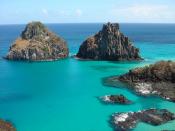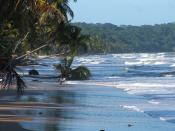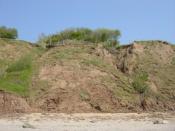Erosion to our coastline has been occurring for millions of years and will continue for millions to come. There are many factors involved with this erosion and they are all a part of what is called coastal geomorphology. Many entire books have been written on the complicated factors involved in coastal erosion. This paper will focus mainly on what is known as long shore current and how it is a part of coastal geomorphology. Long Shore current is a very important part in the process of coastal erosion that can also affect people in direct and indirect ways.
According to John Pethick, long shore currents are the "currents that move parallel to the shore"(87). This happens when waves traveling toward land hit the shore at an angle and recedes back into the ocean at an opposite angle. Some of the water that is refracted moves back out to deeper water and some moves parallel to the shore.
And as Pethick explained these parallel currents are considered long shore currents. Long shore currents can also be compared to a shallow river channel along the beach because they have the tendency to move in shallower water. Because waves can hit the beach at different angles and at different strengths, the direction and speed that long shore current flow in can fluctuate because of these features.
Important to the process of coastal erosion, sand is transported along the beach with the help of waves and these long shore currents. Author Richard Davis explains, "The orbital back and forth motion of the water in the incoming waves pick up the sand [...] the long shore current then gathers the suspended sand from the surf and carries it along the shoreline" (83). In open ocean beaches over time this movement can account for coastal structures.


